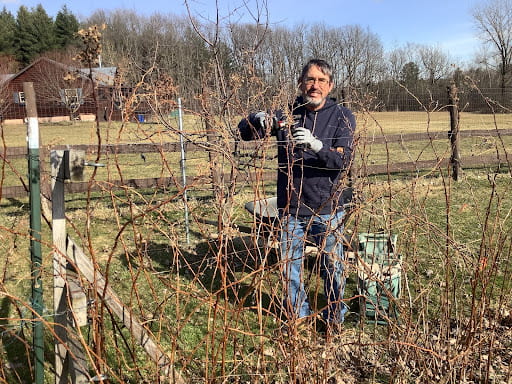You’re probably aware of the importance of pruning fruit trees in the late winter/early spring, but did you know how important it is to prune your raspberry patch?
It’s best to start with a some clear priorities when pruning:
- Remove dead, dying and diseased canes, as well as any insect pests that may be overwintering.
- Reduce competition between your plants for sun, nutrients and water, resulting in a more vigorous plant and a more fruitful harvest.
- Allow for better airflow throughout the raspberry row, drying the plant leaves and any fruit, thereby reducing fungus and mold growth.
Gardeners in northern NY generally plant two main types of raspberries. Summer-bearing raspberries fruit in July and early August, and fall-bearing raspberries fruit in September and October. Knowing whether you have summer or fall varieties of raspberry plants will dictate how they are pruned.
Summer-bearing raspberries produce fruit on canes that grew the previous summer, called floricanes. Floricanes will die immediately after fruiting, so once canes die back (i.e. appear dried and brown) they should be removed, leaving only new cane growth. These new canes will produce fruit next summer. If you missed this pruning step last year, pruning out dead canes should be your first priority. Other steps to take during winter pruning will be to thin canes to 6 to 8 inches apart, removing the smallest and weakest canes first, and to also remove any canes spreading out to where you don’t want them to grow. Make sure that you don’t miss pruning out any diseased and winter-killed canes, or crown galls that you find. Remaining canes should be topped at 48 to 60 inches in height.
Some varieties of summer-bearing raspberries (like Prelude which I have in my garden) may produce a second smaller crop on that year’s new canes in the fall. Make sure to prune off the dried flower stalks when doing your late winter pruning. Read more Raspberry pruning time!
